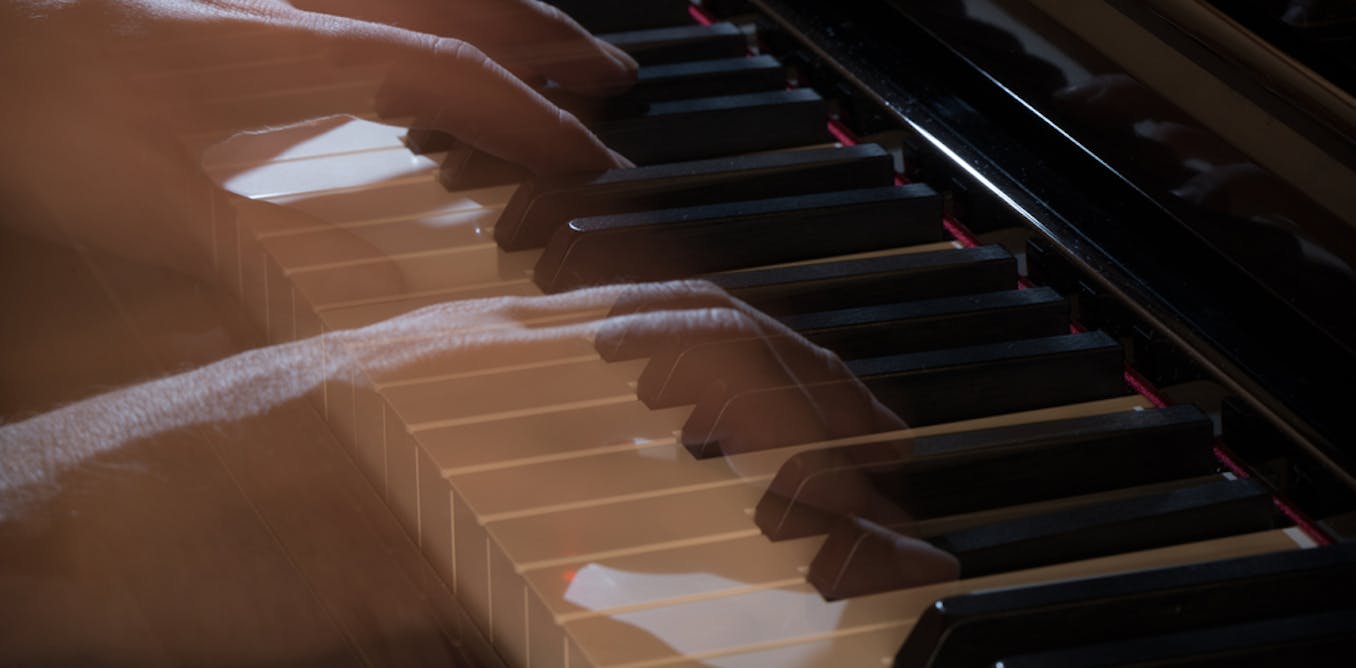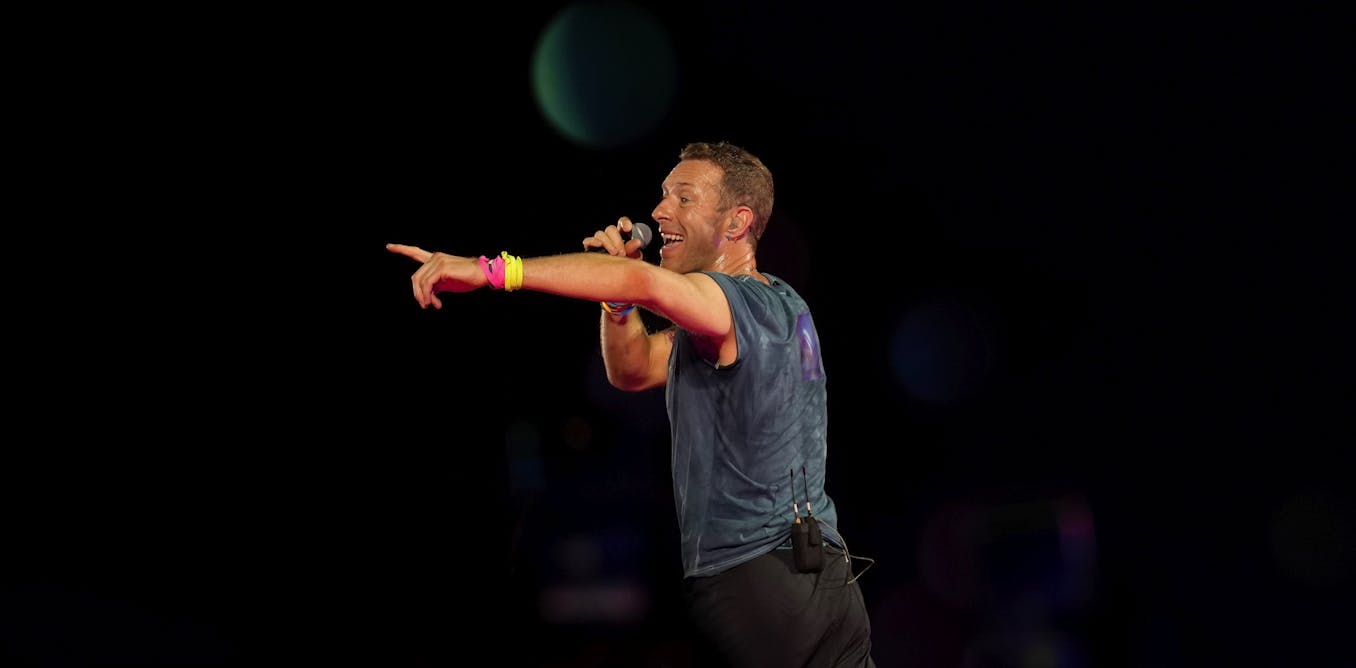One of the most controversial figures in music of the 20th century is Rosemary Brown, who died in 2001 at age 85. She was a British composer who claimed she had contact with the spirits of a number of high-profile composers of western classical music.
Brown produced approximately 300 musical pieces in a variety of styles, according to a list of manuscripts in the British Library. She claimed they were the creations of the spirits of composers that included Johann Sebastian Bach, Ludwig van Beethoven, Franz Schubert, Johannes Brahms, Robert Schumann, Frédéric Chopin and Franz Liszt.
(Louis-Maxime-Dubois/Wikipedia), CC BY-SA
Brown presented herself as a simple homemaker from a humble family who raised two children on her own after her husband’s death. Though her books mention piano classes, she could not have acquired the necessary knowledge to reproduce the style of a Beethoven or a Chopin on the basis of her self-described musical training.
Could Brown have composed such sophisticated music, was she channelling the spirits of classical music’s biggest icons — or was it an elaborate hoax?
Music analysis can certainly not prove life after death, nor can one prove authorship beyond a doubt solely on analysis. However, analysis can help us assess the musical knowledge that would be necessary to compose a given piece in a specific style.
Composed on TV camera
Brown started to create the music in the 1960s and became a classical music celebrity through the 80s. She wrote three books — Unfinished Symphonies, Immortals at my Elbow and Look Beyond Today. Many of her pieces were published in musical scores and recorded.
In 1969, the BBC aired a piece about Brown and her music, and in front of the cameras she wrote the piano piece Grübelei (“brooding” in English), which she attributed to the spirit of Liszt.
The BBC asked for the opinion of leading British Liszt scholar Humphrey Searle about the music, and he was enthusiastic. According to him, the piece was not in any common style of Liszt: It has connections to Liszt’s meditative and austere late works.
Believers, skeptics
Spiritualists and enthusiasts of Brown’s music believed in the authenticity of Brown’s understanding of her experience and of the compositions.
Needless to say, her spiritualist followers tended to downplay Brown’s musical training but praise her musical results in keeping with their belief in her claims.
For some, the evidence was not only in the music she produced. Conductor Kerry Woodward noted Brown was able to suggest corrections to an unpublished opera — Der Kaiser von Atlantis by composer Viktor Ullmann, who was a victim of the Holocaust, murdered at Auschwitz — without having seen Ullmann’s actual score.
A very specific musical change proposed by Brown convinced Woodward that she received the changes from the dead composer himself. In her book Look Beyond Today, Brown reports how she saw the spirit of Ullmann and relayed his notation to Woodward.
A skeptic could wonder if Brown might have somehow managed to look at the score to make informed musical guesses. In general, skeptics minimized Brown’s musical achievements, claiming that her music was an inferior imitation. They also suggested her musical training might have been more substantial than she admitted.
Brown’s music certainly has some limitations that would not be found in the
composers’ works, such as predictable accompaniment patterns and recurrent musical phrase construction. While spiritualists would claim such shortcomings could have resulted from difficulties in spiritual communication, skeptics would see them as proof that the music was not “ghostly” at all.
Structural elements of compositions
One of the primary questions regarding Brown’s music’s authenticity revolved around whether she could reproduce structural elements of the famous composers’ styles in light of skeptics’ claims that the music was a superficial imitation. A sonata attributed to Schubert by Brown presented a good test case for her supporters’ beliefs, since that composer used very unique sonata forms.
One of us, Érico Bomfim, undertook masters and doctoral studies to investigate Brown’s compositions, to understand the extent to which she reproduced the styles of different composers.

(Shutterstock)
One analysis demonstrated that the sonata’s first movement had virtually all the hallmarks of Schubert’s sonata forms. In fact, such an accumulation of Schubertian features is rare even in movements by Schubert himself.
Another one of Érico’s analyses investigated a piece particularly noteworthy as a manuscript that Brown neither published nor recorded. The composition is divided into two parts, called “New Scale Modulations” and “New Scale Example Music.” The piece indeed proposes a “new scale” through four invented key signatures that give rise to transposed versions of the same scale, which uncannily resembles the verbunkos (“Hungarian”) minor scale favoured by Liszt. He used this scale to generate experimental harmonies, which occurs in Brown’s piece as well.
Very specific knowledge
At least some of Brown’s pieces suggest some kind of sophisticated dialogue with specific composers’ styles and musical minds to a much greater degree than would be expected from her self-described level of training and formation, and superficial imitation.
Her pieces demonstrate very specific knowledge which far exceed conventional notions of talent across a range of disparate styles — even if we assume a person had sustained and sophisticated training.
While musicological scholarship cannot address spiritualists’ claims, these compositions suggest a degree of mystery connected with the role and function of Brown’s spirit medium persona, and how this relates to spiritualism and gender.
Deception, performance, and ‘truth’
Brown’s humble and self-deprecating female public persona resonates with, and drew from, female-dominated Victorian spiritualist tradition, which often saw women commune with the dead and usurp gendered authority in varied ways.
Read more:
Spirit photography: 19th-century innovation in bereavement rituals was likely invented by a woman
As Bomfim has argued, even if one rejects Brown’s spiritual medium claims, this needn’t imply Brown’s persona should be taken as (necessarily) fraudulent or deceptive. A persona shares features with masks and performance. What emerges in “performance” isn’t to be understood as deceitful or dishonest — and indeed, it often resonates for audiences as “true.”
Even if both spiritualism and the crafting of a public persona arise through explicit deception, this should not inhibit an examination of spiritualism — and Brown’s legacy as part of this — as cultural phenomena that continue to raise questions about creativity, subjectivity and authority.

The post “Meet the composer who claimed her music channelled the spirits of classical music icons” by James Deaville, Professor of Music, Carleton University was published on 10/27/2024 by theconversation.com




































Leave a Reply